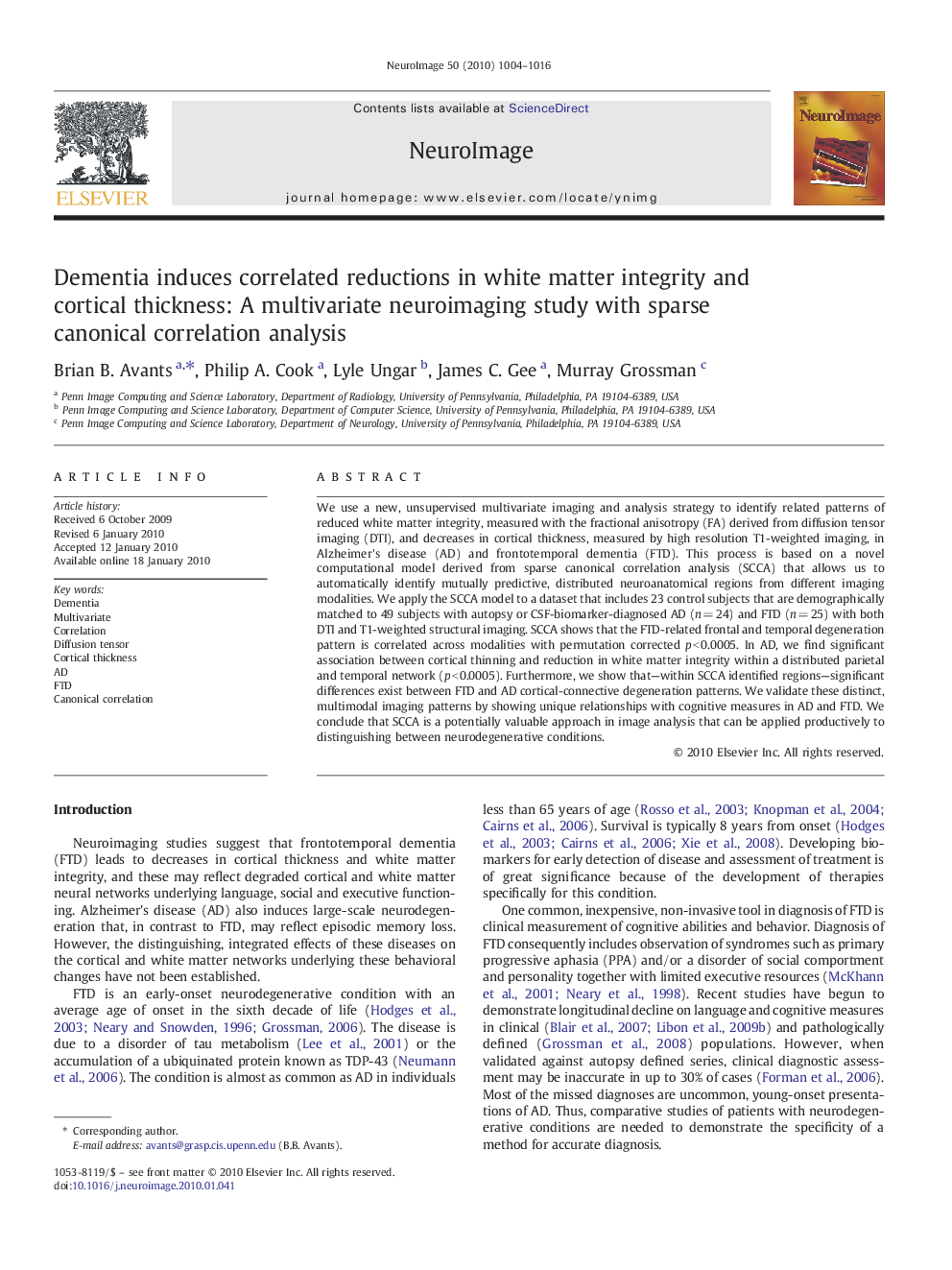| Article ID | Journal | Published Year | Pages | File Type |
|---|---|---|---|---|
| 6036684 | NeuroImage | 2010 | 13 Pages |
Abstract
We use a new, unsupervised multivariate imaging and analysis strategy to identify related patterns of reduced white matter integrity, measured with the fractional anisotropy (FA) derived from diffusion tensor imaging (DTI), and decreases in cortical thickness, measured by high resolution T1-weighted imaging, in Alzheimer's disease (AD) and frontotemporal dementia (FTD). This process is based on a novel computational model derived from sparse canonical correlation analysis (SCCA) that allows us to automatically identify mutually predictive, distributed neuroanatomical regions from different imaging modalities. We apply the SCCA model to a dataset that includes 23 control subjects that are demographically matched to 49 subjects with autopsy or CSF-biomarker-diagnosed AD (n = 24) and FTD (n = 25) with both DTI and T1-weighted structural imaging. SCCA shows that the FTD-related frontal and temporal degeneration pattern is correlated across modalities with permutation corrected p < 0.0005. In AD, we find significant association between cortical thinning and reduction in white matter integrity within a distributed parietal and temporal network (p < 0.0005). Furthermore, we show that-within SCCA identified regions-significant differences exist between FTD and AD cortical-connective degeneration patterns. We validate these distinct, multimodal imaging patterns by showing unique relationships with cognitive measures in AD and FTD. We conclude that SCCA is a potentially valuable approach in image analysis that can be applied productively to distinguishing between neurodegenerative conditions.
Related Topics
Life Sciences
Neuroscience
Cognitive Neuroscience
Authors
Brian B. Avants, Philip A. Cook, Lyle Ungar, James C. Gee, Murray Grossman,
